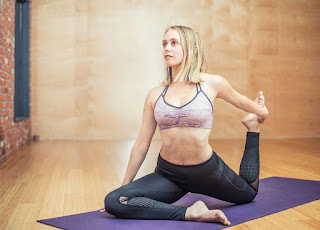
Pilates is a very comprehensive exercise that aids in regaining your body's flexibility and maintaining the tone of all your muscles. Contrary to popular belief, Pilates is not a soft and easy sport; rather, it involves a very demanding sport practice that can be challenging for beginners to follow.read more
There are three main foundational ideas in pilates. The first one is the one that concerns our body's lumbar and abdominal regions. Since the goal is to always strengthen these body parts, we must maintain tension in them throughout the workout. The second fundamental principle is to relax. Every exercise must be done slowly and with calm. Read more
Throughout the Pilates session, try to remain relaxed at all times. The final tenet of this sport's practice is breathing, and in this article, we'll concentrate on this tenet specifically. One of the most crucial components of all exercises is breathing, so you should make an effort to always take a slow, deep breath. In order to make breathing easier, our body's respiratory channel must always be open. The essential information on Pilates breathing is provided below.
What does Pilates require you to breathe?
- a calm location for a yoga mat
- Pilates breathing instructions
Diaphragmatic breathing refers to the type of breathing required for Pilates exercises. Try to fill the lowest part of your lungs with as much air as you can with this breath. If you are unable to do this kind of breathing, you should only practice the techniques listed below.
Relax. Try to unwind by lying on your back on the floor. She closes her eyes and concentrates on not thinking.
If you'd like, you can aid in relaxation by lighting some fragrant candles and playing very relaxing music.
Try to direct the air you inhale through your nose toward your lower abdomen. Place your hands on your stomach and feel the rise. Only raise your belly; do not do so with your chest.
Expel all of the air from your lungs when you are unable to breathe. This will be done through your mouth. You must contract your lower abdomen to help you let go of the air. You'll be able to see how your belly deflates in this way. Until you can automate this type of breathing, practice for several minutes.
As soon as you can, try to do Pilates while breathing through your abdominals. Keep in mind that relaxation is the key to everything.
Pilates breathing techniques
It's possible that you are not accustomed to breathing properly if you find it difficult to maintain a good breath while practicing Pilates. You shouldn't be alarmed because it happens to a lot of adults. Diaphragmatic breathing usually occurs naturally in infants and young children.
But as we get older, we often change this breathing pattern. This occurs because, although we are born naturally breathing with the diaphragm, over time we change the way we breathe. Breathing is a process that we carry out automatically without pausing to think about how we do it. The primary cause of this is bipedalism. We tend to breathe with the upper part of our lungs because we spend so much time on our feet or with our upper body vertical. This results in much shallower breathing and much less air intake. We must be clear that this method of breathing is not bad in and of itself because we are capable of getting the air we require. However, when we exert ourselves, as during a Pilate's session, this air is insufficient, so it is practical to retrain ourselves to breathe with the diaphragm as we did naturally as children.
Conclusion
Spend some time unwinding and practicing meditation if you struggle to follow your breath during Pilates. You'll be able to regulate your breathing more and more as a result of these exercises.






























